CAMP VRELO, Kosovo - U.S. KFOR Soldiers from 4th platoon, Bravo and Charlie Company of the 231st Maneuver Task Force, represented Multi-National Battle Group-East (MNBG-E) during a massive Crowd-and-Riot-Control (CRC) exercise here to demonstrate KFOR's ability to respond quickly and decisively to incidents in Kosovo.
All five KFOR Multi-National Battle Groups were represented in the training exercise, along with the European Union Rule of Law Mission in Kosovo (EULEX), the Multi-National Specialized Unit (MSU) and the KFOR Tactical Maneuver Battalion (KTM).
The large-scale event, complete with heavy smoke, real tear gas and flaming vehicles, is conducted every three months by KFOR Headquarters. It is intended to help all battle group Soldiers familiarize themselves with each other's operations and provide an opportunity for them to work in a joint environment.
The Bravo and Charlie 231st Soldiers were a big part of the exercise when it came to suppressing a mob of snowball-tossing, water bottle-chucking and mud-slinging mock rioters. The exercise included aviation medevac support from MNBG-E.
The three-day event started with classroom discussions and planning, followed by a rehearsal on the second day to help facilitate coordination for the final day. The actual exercise started quietly, with each nation displaying CRC equipment and sharing techniques.
"The importance of these exercises is to familiarize all of the Soldiers of the various battle groups with one another's assets, vehicles and CRC procedures," said Capt. William J. Nels, Minot, N.D., MNBG-E CRC liaison officer. "This gives the opportunity to reinforce the importance of communication and cooperation."
The main event kicked-off with a bang, as EULEX officers were the first to respond to the shouts and taunts of the "rioters," played by KFOR Soldiers from the French and Swiss Armies.
EULEX used its training and knowledge to push the rioters back. They then handed off the responsibilities to the KTM, which forced the 60-plus rioters back to an obstacle consisting of two burning vehicles in the road.
Nels said to ensure the safety of all of the Soldiers each battle group provided observer to monitor the Soldiers participating in the exercise and to help avoid injuries.
Next, Swedish Soldiers from Multi-National Battle Group-Center took over for KTM, pushing the rioters back even farther. They used armored vehicles to ram and clear the burning vehicles.
That's when 1st Lt. Jared Z. Bollom, New Salem, N.D., platoon leader for Bravo Company, ordered his troops to the front line to spell the Swedish effort and to continue quelling the riot.
"The importance of this exercise is to show how the different countries can work together and learn from each other," Bollom said.
The rioters continued to advance toward the mix of Bravo and Charlie Company Soldiers, who deflected snowballs, mud and water bottles with their riot shields.
"It gives us the ability to use the training we have received and to hone our skills and work with other nations," Bollom said. "Of course, these exercises also keep us prepared if we were ever asked to support a real incident."
Sgt. 1st Class Brandon J. Hemsing, East Grand Forks, Minn., Bravo Company platoon sergeant, was proud of his Soldiers performance under the stress of the exercise.
"I was pleased at how prepared we were today," he said. "We came in with a good attitude, and at the end, we left with a good attitude and lessons learned."
The exercise came to a conclusion with the last scenario, a medical evacuation of a Multi-National Battle Group-South Soldier, with a simulated injury, by a UH-60 Blackhawk helicopter provided by MNBG-E.
Soldiers from both battle groups worked together to transport the "injured" to Camp Bondsteel for medical treatment.
Brig. Gen. Al Dohrmann, Bismarck, N.D., commander of MNBG-E, was one of a number of battle group leaders who were able to watch the exercise. He was joined by Lt. Gen. Markus Bentler, KFOR commander.
"It was a pleasure for me to witness the skill and proficiency of Multi-Battle Group-East Soldiers as they worked shoulder-to-shoulder with members of other battle groups, KTM, MSU and EULEX to break up a simulated violent demonstration," Dohrmann said. "Though this was a mock exercise, at times, it was hard to tell, because of the realistic elements that were a part of it, not the least of which was the determined opposition put forth by our KFOR friends from the French and Swiss Armies."
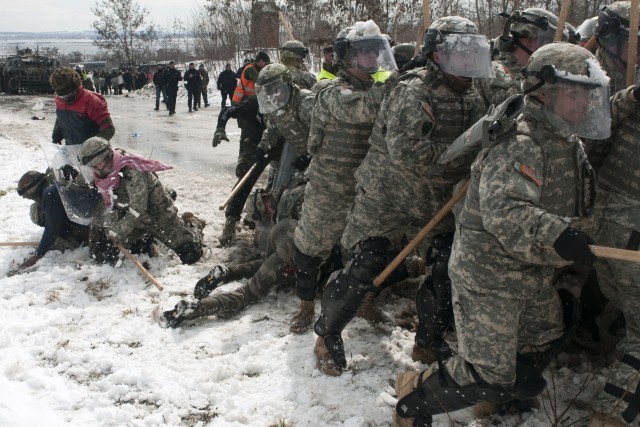
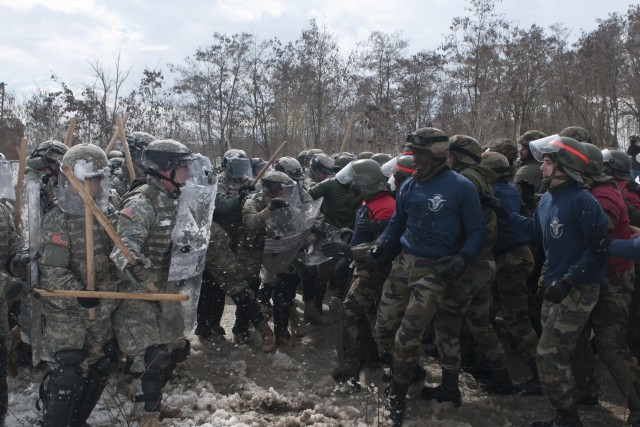
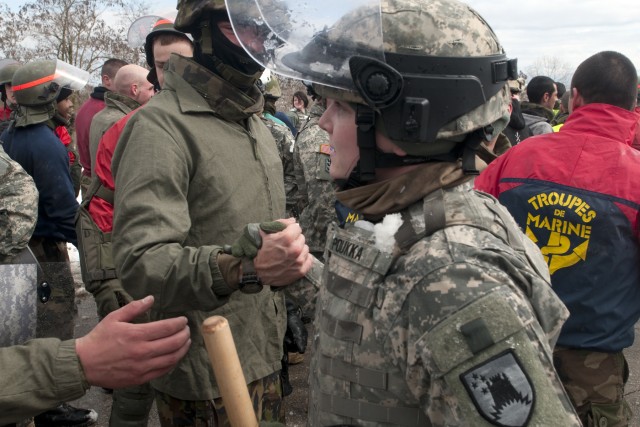
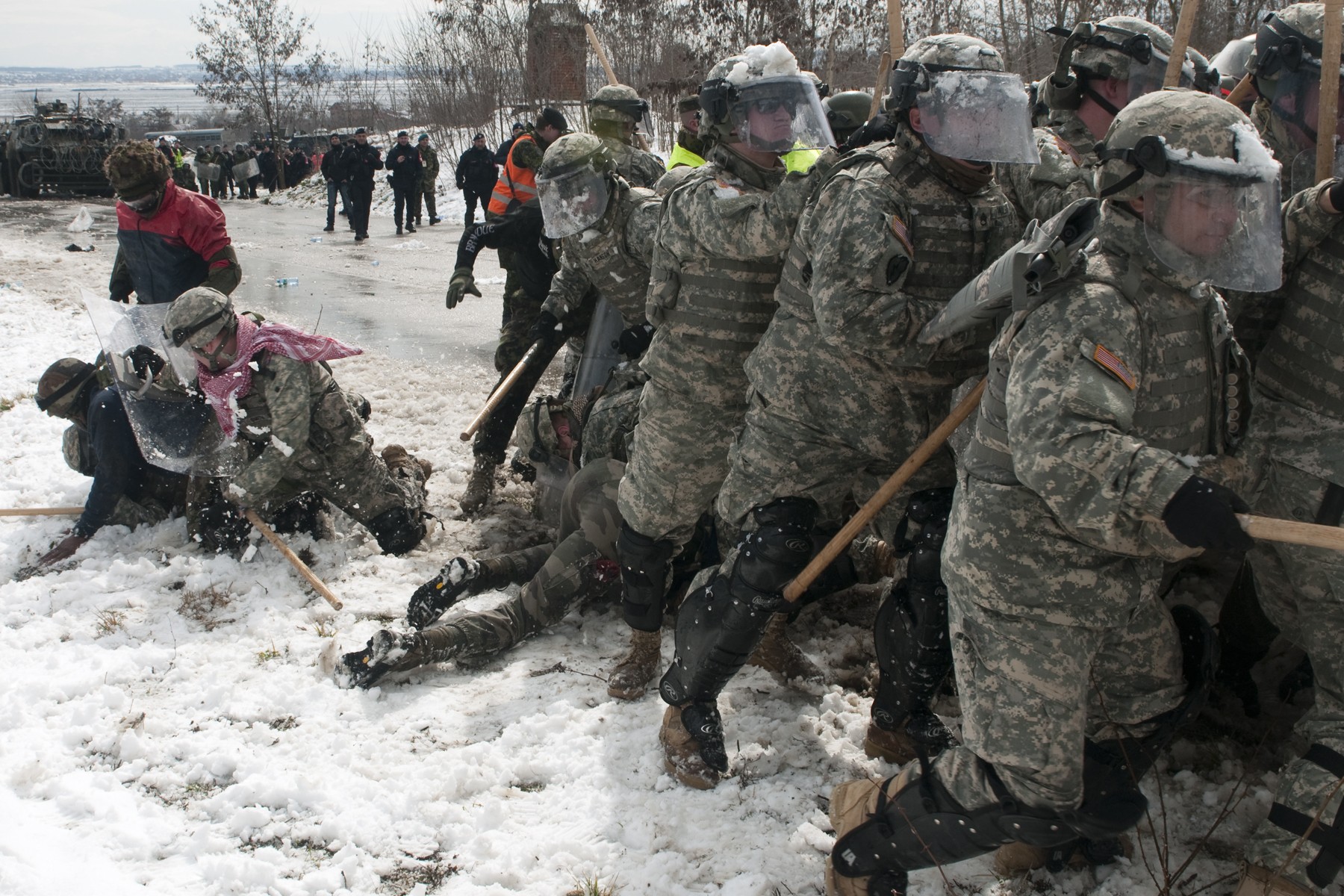
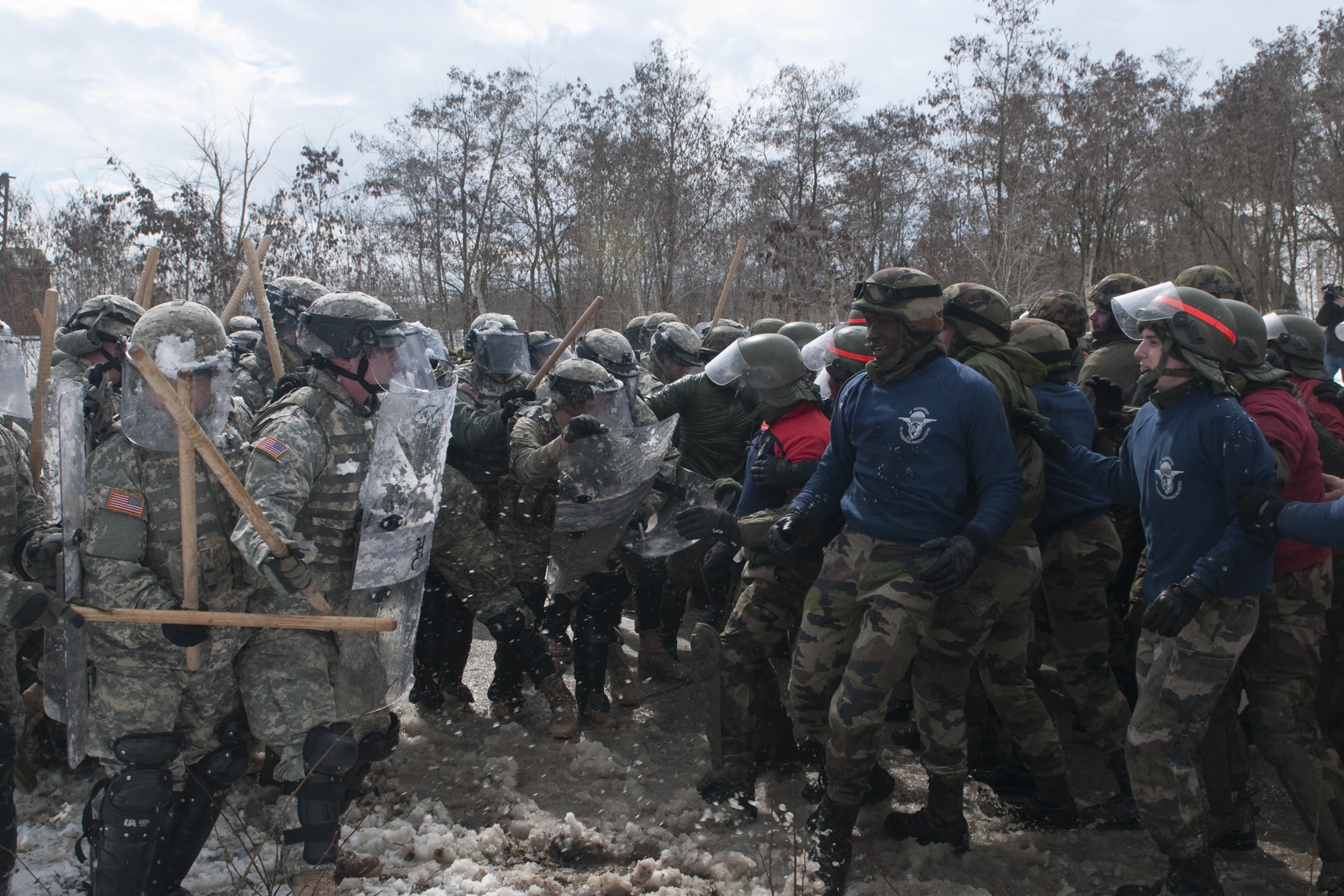
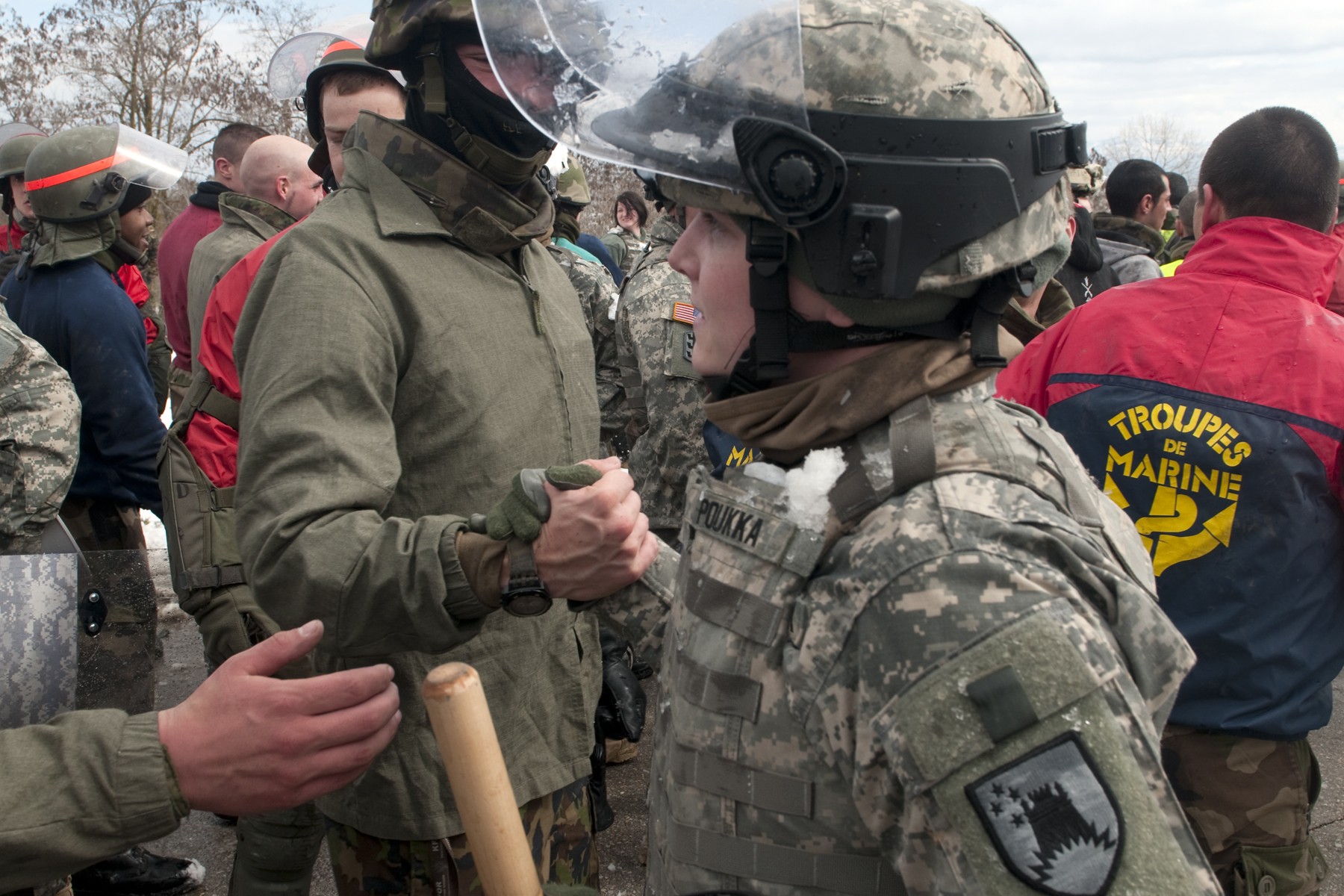
Social Sharing